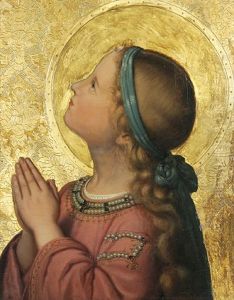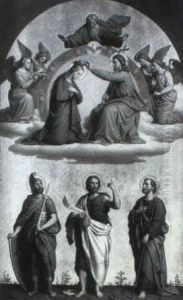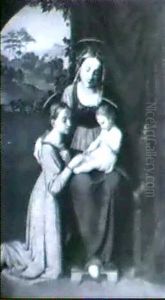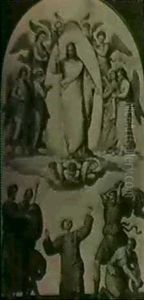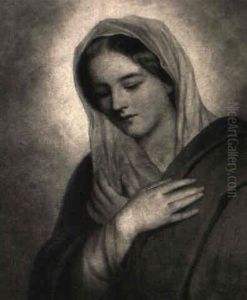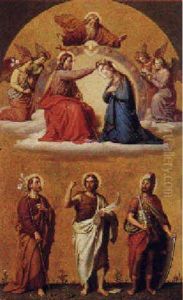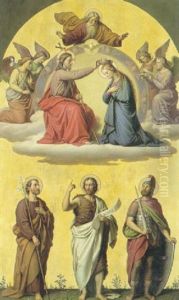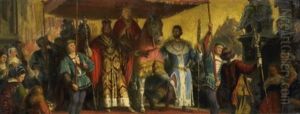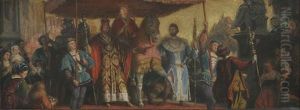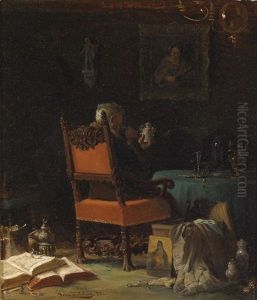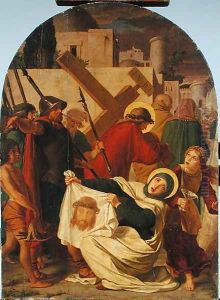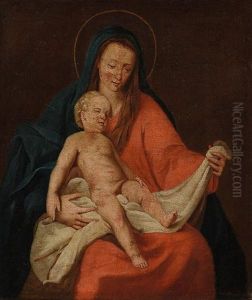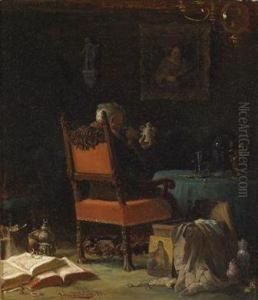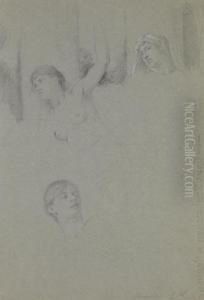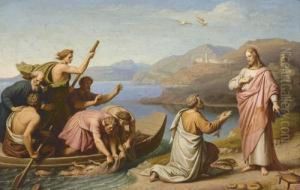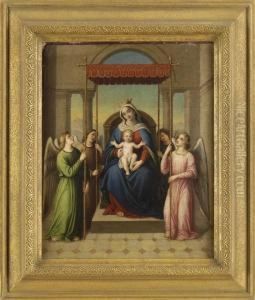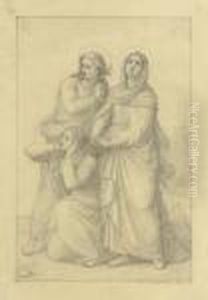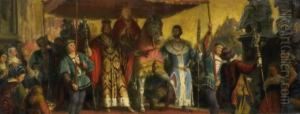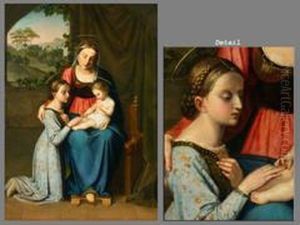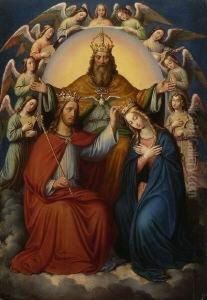Johann von Schraudolph Paintings
Johann von Schraudolph was a German painter associated with the Nazarene movement, born on September 26, 1808, in Oberstdorf, then part of the Kingdom of Bavaria. He was one of the prominent figures in the group of German artists who sought to revive the spirituality and the technical precision of medieval art and early Renaissance painting. The Nazarenes were a group of early 19th-century German Romantic painters who aimed to reform art by embracing spiritual and religious themes with a particular emphasis on high aesthetic values.
Schraudolph was trained at the Academy of Fine Arts Munich, where he was influenced by the works of Peter Cornelius, one of the leading figures of the Nazarenes. In 1834, he moved to Rome, which was a hub for the Nazarenes, and joined the St. Luke’s Brotherhood, a community of artists who lived and worked together, sharing similar artistic and religious ideals. During his time in Rome, Schraudolph developed his style that was characterized by clarity, attention to detail, and a serene, devotional approach to religious subjects.
In the 1840s, he received a commission from King Ludwig I of Bavaria to carry out frescoes in the newly constructed St. Boniface's Abbey in Munich. This work, which includes a series of frescoes depicting scenes from the life of St. Boniface, is considered a masterpiece of Nazarene art. Schraudolph's frescoes were noted for their warm color palette and the fusion of religious content with the naturalistic treatment of figures and landscapes.
Throughout his career, Johann von Schraudolph continued to receive important commissions for religious artworks, including altarpieces and frescoes for churches in Germany and Switzerland. His work contributed to the resurgence of religious art in the 19th century and had a lasting influence on the art of church decoration in the period.
Schraudolph's legacy is one that reflects the Nazarene movement's dedication to a spiritual revival in art, through a return to the techniques and narrative styles of the past. He passed away on May 31, 1879, in Munich, leaving behind a body of work that is still appreciated for its devotional beauty and historical significance.
